Refine search
Actions for selected content:
12661 results in History of science
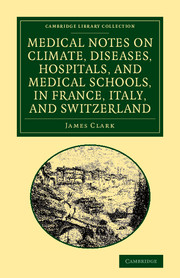
Medical Notes on Climate, Diseases, Hospitals, and Medical Schools, in France, Italy, and Switzerland
- Comprising an Inquiry into the Effects of a Residence in the South of Europe, in Cases of Pulmonary Consumption
-
- Published online:
- 05 October 2014
- Print publication:
- 19 September 2013
- First published in:
- 1820
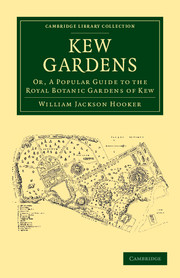
Kew Gardens
- Or, A Popular Guide to the Royal Botanic Gardens of Kew
-
- Published online:
- 05 October 2014
- Print publication:
- 05 September 2013
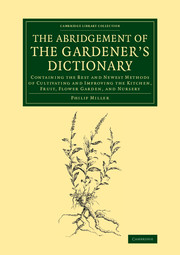
The Abridgement of the Gardener's Dictionary
- Containing the Best and Newest Methods of Cultivating and Improving the Kitchen, Fruit, Flower Garden, and Nursery
-
- Published online:
- 05 October 2014
- Print publication:
- 20 February 2014
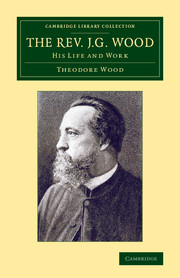
The Rev. J. G. Wood
- His Life and Work
-
- Published online:
- 05 October 2014
- Print publication:
- 21 November 2013
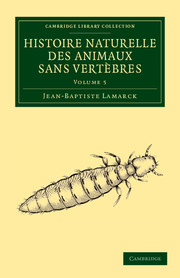
Histoire naturelle des animaux sans vertèbres
-
- Published online:
- 05 October 2014
- Print publication:
- 06 May 2013
- First published in:
- 1818

Flora atlantica
- Sive historia plantarum quae in Atlante, agro Tunetano et Algeriensi crescunt
-
- Published online:
- 05 October 2014
- Print publication:
- 05 September 2013
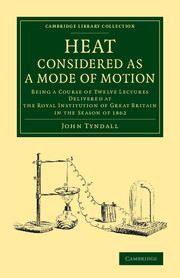
Heat Considered as a Mode of Motion
- Being a Course of Twelve Lectures Delivered at the Royal Institution of Great Britain in the Season of 1862
-
- Published online:
- 05 October 2014
- Print publication:
- 13 February 2014
- First published in:
- 1863
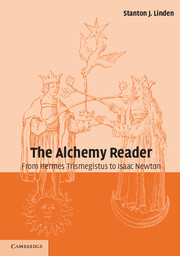
The Alchemy Reader
- From Hermes Trismegistus to Isaac Newton
-
- Published online:
- 05 October 2014
- Print publication:
- 28 August 2003
Contents
-
- Book:
- The Mechanical Principles of Engineering and Architecture
- Published online:
- 05 June 2016
- Print publication:
- 25 September 2014, pp xix-xxiii
-
- Chapter
- Export citation
PREFACE
-
- Book:
- The Mechanical Principles of Engineering and Architecture
- Published online:
- 05 June 2016
- Print publication:
- 25 September 2014, pp v-xviii
-
- Chapter
- Export citation
EXAMPLES OF DIAGRAMS OF FORCES FOR STRUCTURES BELONGING TO CLASS I
- from PART II - ON DIAGRAMS OF FORCES WITH NUMEROUS EXAMPLES
-
- Book:
- Economics of Construction in Relation to Framed Structures
- Published online:
- 05 June 2016
- Print publication:
- 25 September 2014, pp 62-68
-
- Chapter
- Export citation
Note A
- from APPENDIX
-
- Book:
- The Mechanical Principles of Engineering and Architecture
- Published online:
- 05 June 2016
- Print publication:
- 25 September 2014, pp 605-606
-
- Chapter
- Export citation
Note B - Poncelet's Theorem
- from APPENDIX
-
- Book:
- The Mechanical Principles of Engineering and Architecture
- Published online:
- 05 June 2016
- Print publication:
- 25 September 2014, pp 606-610
-
- Chapter
- Export citation
Frontmatter
-
- Book:
- Economics of Construction in Relation to Framed Structures
- Published online:
- 05 June 2016
- Print publication:
- 25 September 2014, pp i-iv
-
- Chapter
- Export citation
Table II - Showing the Angle of Rupture ψ of an Arch whose Loading is of the same Material with its Voussoirs, and whose Extrados is inclined at a given Angle to the Horizon
- from APPENDIX
-
- Book:
- The Mechanical Principles of Engineering and Architecture
- Published online:
- 05 June 2016
- Print publication:
- 25 September 2014, pp 616-618
-
- Chapter
- Export citation
PART V - THE STRENGTH OF MATERIALS
-
- Book:
- The Mechanical Principles of Engineering and Architecture
- Published online:
- 05 June 2016
- Print publication:
- 25 September 2014, pp 486-585
-
- Chapter
- Export citation
APPENDIX
-
- Book:
- The Mechanical Principles of Engineering and Architecture
- Published online:
- 05 June 2016
- Print publication:
- 25 September 2014, pp -
-
- Chapter
- Export citation
STRUCTURES BELONGING TO CLASS III
- from PART II - ON DIAGRAMS OF FORCES WITH NUMEROUS EXAMPLES
-
- Book:
- Economics of Construction in Relation to Framed Structures
- Published online:
- 05 June 2016
- Print publication:
- 25 September 2014, pp 80-89
-
- Chapter
- Export citation
PART IV - THE THEORY OF THE STABILITY OF STRUCTURES
-
- Book:
- The Mechanical Principles of Engineering and Architecture
- Published online:
- 05 June 2016
- Print publication:
- 25 September 2014, pp 403-485
-
- Chapter
- Export citation
PART III - THE THEORY OF MACHINES
-
- Book:
- The Mechanical Principles of Engineering and Architecture
- Published online:
- 05 June 2016
- Print publication:
- 25 September 2014, pp 160-402
-
- Chapter
- Export citation
